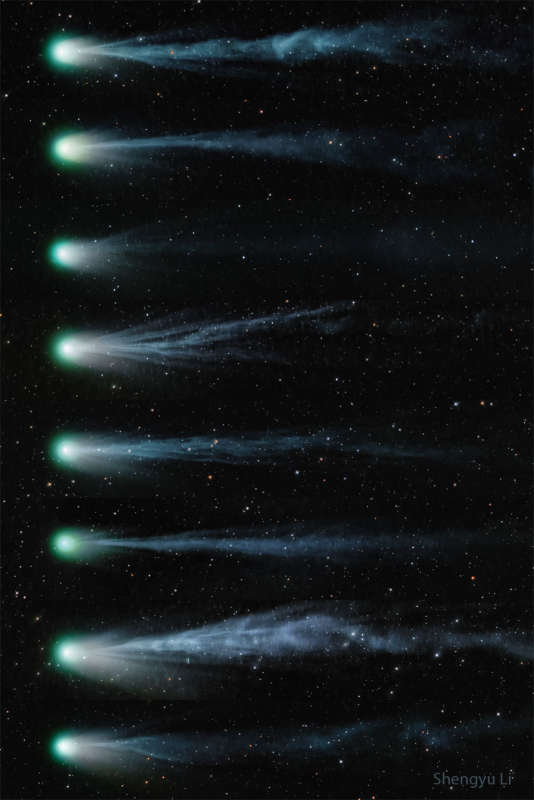Credit & Copyright: Shengyu Li & Shaining
Explanation:
How does a comet tail change?
It depends on the comet.
The ion tail of
Comet 12P/PonsБBrooks has been changing markedly,
as detailed in the featured image sequenced over nine days
from March 6 to 14 (top to bottom).
On some days, the comet's
ion tail was relatively long and complex,
but not every day.
Reasons for tail changes include the rate of
ejection of material from the
comet's nucleus,
the strength and complexity of the
passing solar wind, and the
rotation rate of the
comet.
Over the course of a week, apparent changes even include a
change of perspective from the Earth.
In general, a comet's
ion tail will point away from the Sun,
as gas expelled is pushed out by the
Sun's wind.
Today,
Pons-Brooks
may become a rare comet
suddenly visible in the middle of the day for those able to see the
Sun totally eclipsed by the Moon.
NASA Coverage:
Today's Total Solar Eclipse
Total Eclipse Imagery:
Notable Submissions to APOD
1999 2000 2001 2002 2003 2004 2005 2006 2007 2008 2009 2010 2011 2012 2013 2014 2015 2016 2017 2018 2019 2020 2021 2022 2023 2024 2025 |
Январь Февраль Март Апрель Май Июнь Июль Август Сентябрь Октябрь Ноябрь Декабрь |
NASA Web Site Statements, Warnings, and Disclaimers
NASA Official: Jay Norris. Specific rights apply.
A service of: LHEA at NASA / GSFC
& Michigan Tech. U.
|
Публикации с ключевыми словами:
comet - кометы - кометные хвосты
Публикации со словами: comet - кометы - кометные хвосты | |
См. также:
Все публикации на ту же тему >> | |
